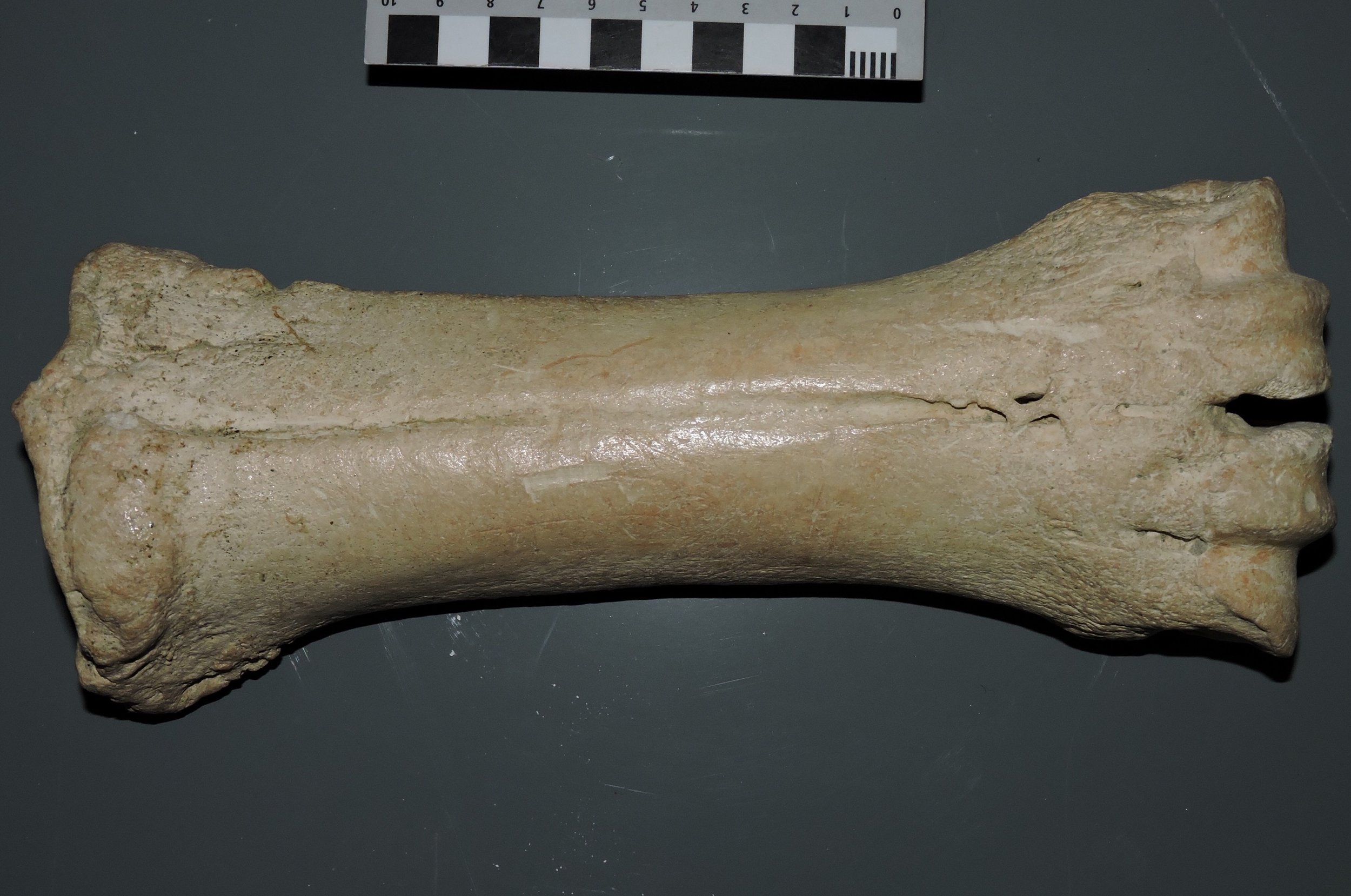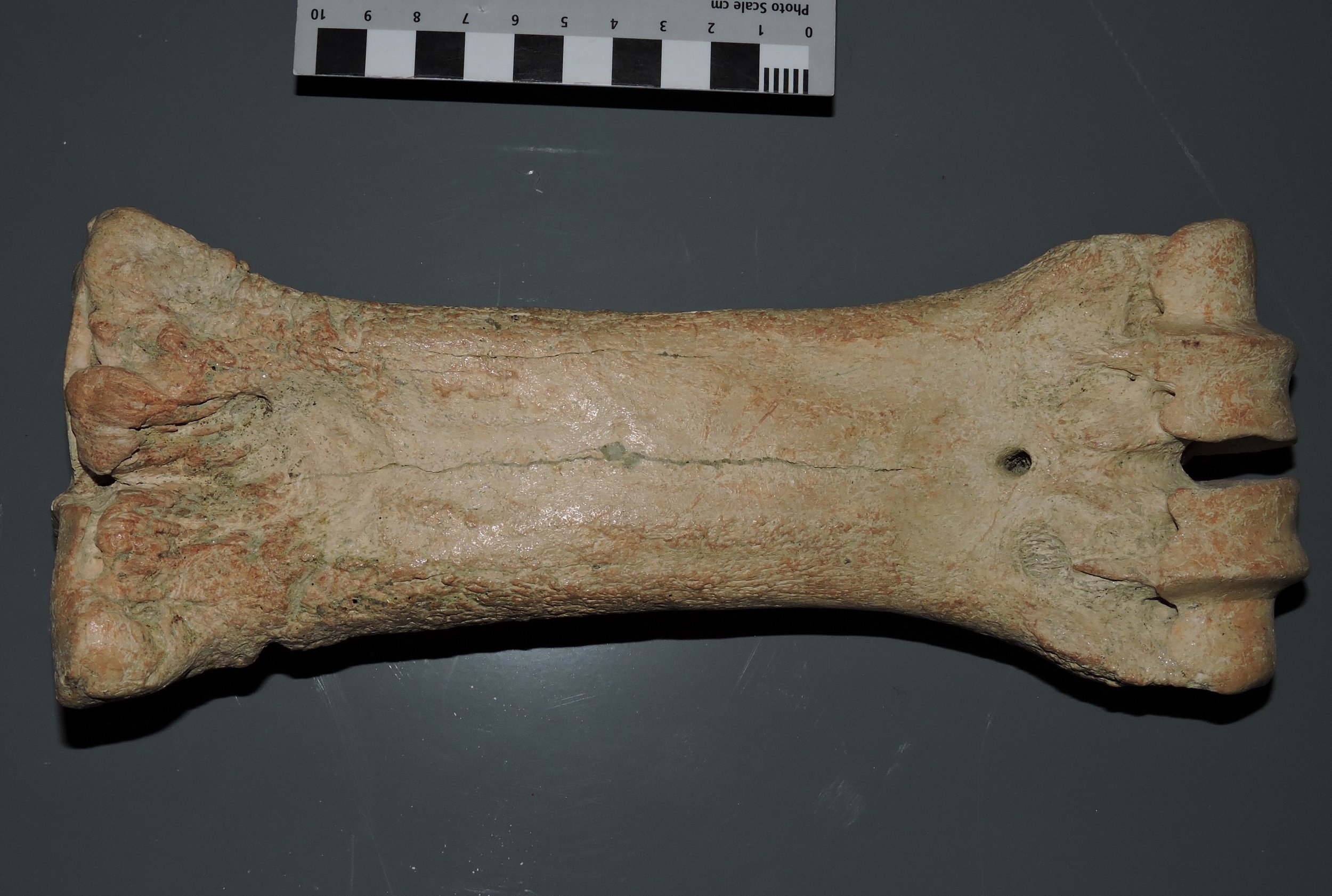 This week's Fossil Friday features a metacarpal (hand bone) from a Pleistocene bison. The example shown here is a left metacarpal shown in anterior view, with the proximal end (at the wrist) on the left and the distal end (at the first knuckles) on the right.Like many other advanced artiodactyls, in bison this structure is actually two bones that are fused together. These are the third and fourth metacarpals, the hand bones that in humans support the middle finger (Digit III) and the ring finger (Digit IV). Both of these "fingers" are present in bison as well, with each supporting a hoof (remember that our hands are just highly modified front feet). The articulations for each digit are visible at the distal end of the bone, on the right side of the picture.Here's the same bone in posterior view (the equivalent of "palmar view" in a human hand):
This week's Fossil Friday features a metacarpal (hand bone) from a Pleistocene bison. The example shown here is a left metacarpal shown in anterior view, with the proximal end (at the wrist) on the left and the distal end (at the first knuckles) on the right.Like many other advanced artiodactyls, in bison this structure is actually two bones that are fused together. These are the third and fourth metacarpals, the hand bones that in humans support the middle finger (Digit III) and the ring finger (Digit IV). Both of these "fingers" are present in bison as well, with each supporting a hoof (remember that our hands are just highly modified front feet). The articulations for each digit are visible at the distal end of the bone, on the right side of the picture.Here's the same bone in posterior view (the equivalent of "palmar view" in a human hand): In this view the articulations for digits III and IV are more clearly visible on the right, but the groove indicating the line of fusion between the third and fourth metacarpals is almost completely lost.Last year I posted photos of the metacarpal from the extinct camel Camelops. Camels and bison are not very closely related to each other, but they are both artiodactyls that show similarities is the hand and foot structure. In both animals the front foot is reduced to just the fused third and fourth metacarpals. Camelops was a large animal that was much taller than Bison, and this is reflected by the relatively long, slender metacarpal. Bison, while shorter, were heavier and had to support a massive head, resulting in a shorter, stouter metacarpal.
In this view the articulations for digits III and IV are more clearly visible on the right, but the groove indicating the line of fusion between the third and fourth metacarpals is almost completely lost.Last year I posted photos of the metacarpal from the extinct camel Camelops. Camels and bison are not very closely related to each other, but they are both artiodactyls that show similarities is the hand and foot structure. In both animals the front foot is reduced to just the fused third and fourth metacarpals. Camelops was a large animal that was much taller than Bison, and this is reflected by the relatively long, slender metacarpal. Bison, while shorter, were heavier and had to support a massive head, resulting in a shorter, stouter metacarpal.
